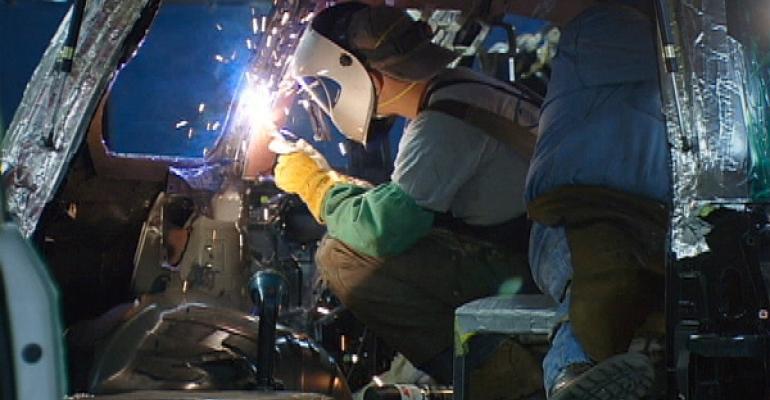For most companies, when sales are up it’s a good thing, but for International Armoring, it is a sign violence is on the rise.
The company, which is based in Utah, manufactures armored vehicles and bulletproof cars for individuals around the world. “We’ve been involved with threat situations for a number of years, and we’ve definitely noticed an increase lately,” CEO Mark Burton tells WardsAuto.
International Armoring sales have grown 15% so far this year compared with like-2011. Last year, the company armored 500 vehicles. However, orders fluctuate from year to year depending on circumstances, he says.
For example, during the height of the Iraq war, Burton’s firm armored 1,500 Humvees, in addition to 400 orders from independent and corporate customers.
Because of poor road infrastructures and rural conditions in areas where demand for armored vehicles is on the rise, International Armoring mostly modifies SUVs, including the Range Rover, Toyota Land Cruiser and Chevy Suburban.
The company does armor sedans, but it’s “easier for a Range Rover to get out of dangerous situation than a Mercedes S550 (sedan),” Burton says.
Many of the “hot spots” where his company provides armored vehicles are in countries where major auto makers and suppliers operate manufacturing facilities. Among the more notable is Mexico, where 49 bodies recently were found on a highway near the city of Monterrey, likely the result of the country’s ongoing drug war.
Ford, Volkswagen, Nissan and General Motors are among auto makers that produce vehicles in Mexico.
“Executives who live in the U.S. have purchased a number of armored vehicles for when they go to Mexico to oversee manufacturing facilities,” Burton says. “There may not be specific threats against them, but (the armored vehicles) are for the circumstances in general.”
Mexico is not where kidnappings for profit started, he adds, but it is “where it was perfected.” Executives are singled out because their companies generally pay the ransom demands.
However, Sao Paulo, Brazil, is the No.1 market globally for armored vehicles, Burton says, with orders numbering about 600 units a month.
The choice of vehicle is made easier because Brazil is home to many of the world’s major auto makers including GM, Ford, Fiat, VW, Renault-Nissan, PSA Peugeot Citroen, Honda, Hyundai, Mitsubishi and Audi.
While International Armoring mostly works with SUVs and luxury sedans such as BMW and Mercedes models, there have been some unusual requests over the years, Burton says. For example, a wealthy Mexican businessman recently ordered a VW Beetle to be armored for his son’s 16th birthday.
The company also armors high-end sports cars such as Ferraris and Aston Martins, as well as low-key vehicles such as the Ford Escape. “The CEO (who ordered the Escape) didn’t want to draw attention,” Burton explains. “He wanted to blend right in.”
Blending in is especially important in war zones such as Iraq, where many customers prefer a nondescript vehicle rather than a high-profile Suburban or Tahoe that more often are targeted by militants who assume they are carrying people of importance.
In the past, larger SUVs were the popular choice because the armor was made of heavy steel plating that weighted the vehicle down and reduced its performance. But today’s materials are lighter-weight and easily concealed within the body of a vehicle.
“We use lightweight synthetic fiber laminates to armor the roof, pillars, post and floor,” Burton says. “We do use some steels, but the composites are 40%-60% lighter.”
The majority of armored parts added to a vehicle are prefabricated and inserted into body cavities. There are two levels of protection a customer can order. The first is designed to stop bullets from most handguns, while the second holds up against assault rifles.
Although the composites used by International Armoring are lighter than traditional steel plates, they do add weight. Handgun protection can add 400 lbs.-450 lbs. (181 kg-204 kg), while high-powered rifle protection can add 950 lbs.-1,100 lbs. (431 kg-499 kg).
Suspension and brakes are modified to handle the extra load, but because International Armoring typically begins with a vehicle powered by a V-8 engine, powertrain modifications are not needed.
Burton says his company’s business is divided nearly equally among corporations, individuals and government entities.
So far this year, International Armoring’s business is booming, he says, pointing to a recent contract from a U.S. security firm for 850 vehicles. “We’re a niche business and when things are tough, we do better.”



